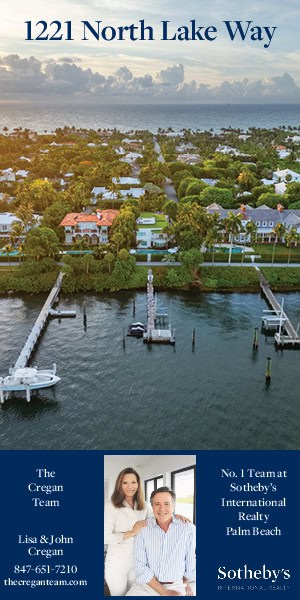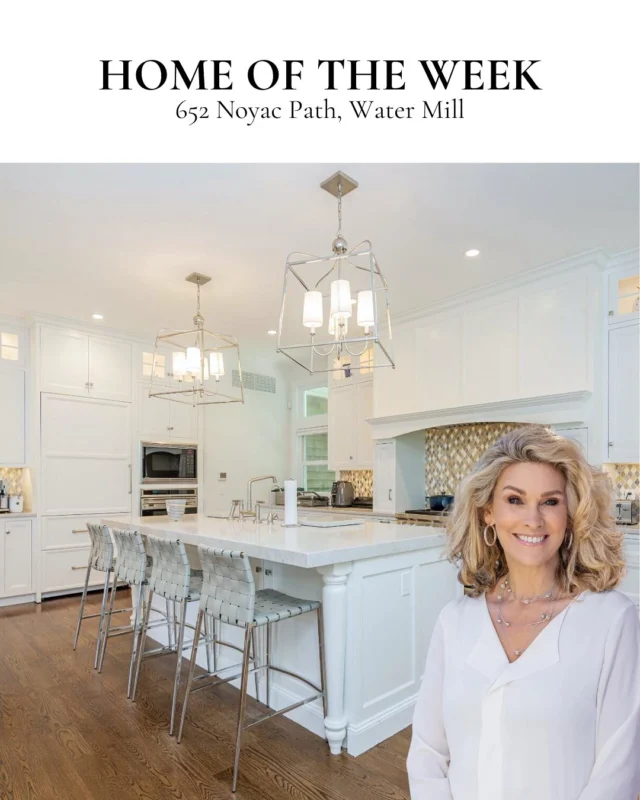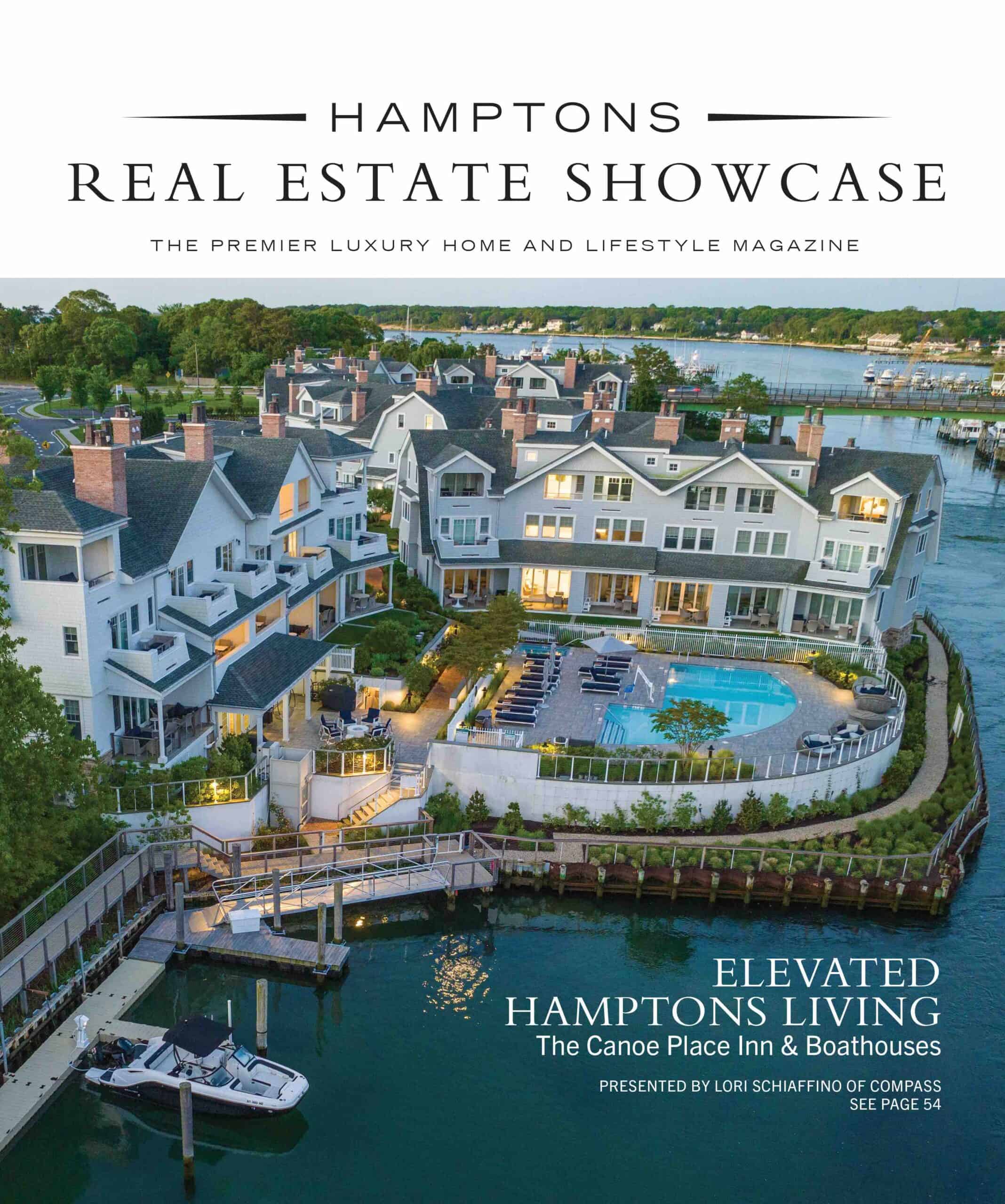The Light Stuff
One thing that distinguishes the work of Shelter Island artist, Sylvia Hommert, is her use of unusual materials – from crystalline mineral salts to metal leaf. It’s all in her effort to capture the “liquid and fluid nature of light,” she says. “I am captivated by the silvery light glistening off alpine icicles and the lavender iridescence of sunset on water.”
Drawn to materials that “enhance and illuminate,” she starts by laying down a reflective surface such as holographic paper or “pearly paua shell.” She then tops it with a substance such as beeswax or bee resin, whose malleable qualities allow her manipulation – sometimes even using a flame to burn them – to expose the reflective material underneath “that holds a hint of mystery that’s akin to uncovering buried treasure.” The substances also “help me create depth, texture and dimension.” The final step is painting on a layer of water-based pigments.
Before embracing art full time, Hommert was a fashion designer who worked for such style icons as Donna Karan and Ralph Lauren. “I was always intrigued by textiles.” Traveling extensively for her job, she made a point to keep up with the art world by “going to every gallery wherever I was in the world.” While her abstract images of sunbursts and geometric configurations delight the viewer, the creative process delights her. “It’s very process-driven, very repetitive. It keeps me in meditative zone.”
Her work is in many collections including those of Skadden, Arps, Slate, Meagher & Flom, Los Angeles; Bellagio Hotel, Las Vegas; Turnberry Resort, Turnberry, Florida, and Ghiradelli Hotel, San Francisco.
Building Bridges
Antonio Masi lives in Montauk, but he paints dramatic ethereal images of New York City’s great bridges. His inspiration was born in 1947 when he emigrated with his family from Italy, passing through Ellis Island and gazing up at “thousands of glowing lights dotting the skyline.” His large-scale works (up to 8-feet tall and 7-feet wide) evoke those early “indelibly imprinted and magical moments.”
The first bridge he painted was the 59th Street Bridge, a structure for which he harbors a deep attachment: “In the early 1900s my grandfather, Francisco Masi, was one of the multitudes of Italian laborers who hauled steel girders to build it.”
Before setting paint (mostly watercolor) to paper, Masi walks across each bridge and studies its history and architecture so that he can best capture the essence of his subject. “I tend to use watercolor thickly—the way most people use oils,” he says. He applies multiple glazes and “juicy washes” before focusing on such details as pins, bolts, curves, angles, masonry, and wire.
His images of the mammoth stone structures rising like cathedrals into the heavens are brought down to earth by the street level reality: graffiti here, a smudge of yellow taxi there. “My primary concern is to capture mood and those stirring, overpowering sensations reminiscent of my first glimpse of New York Harbor.”
Close to Home
When Dana Little Brown began painting full time, she focused on “things that I grow.” It’s no wonder. The artist, who has made the Hamptons home for the past 40 years, resides in an 1860 North Sea manor house that presides over a 28-acre “gentleman’s farm.”
Produce from her sizable vegetable garden – from onions to peppers – showed up on canvases, as did flowers grown from seed in her greenhouse. A vibrant rendering of zinnias and Gloriosa Daisies executed in yellow, red and orange oil pastels hangs over the dining room mantel. The richly saturated hues are given a sumptuous texture by the velour paper on which they are depicted.
Beyond still lifes the artist meandered into her garden to capture intimate flora-draped pathways. Heading to the chicken coop, she painted a series of loving homages to her hens – Rhode Island Reds, Black Australorps – which were all killed by raccoons.
Venturing further afield on neighborhood walks with her dog or by bicycle Brown explored the local waterways – painting the grasses and dunes surrounding such picturesque Southampton beachscapes as Heady Creek. Early on she made a series of paintings of the iconic dilapidated Meadow Lane boathouse once owned by Greek ship-building magnate Manuel Kulukundis. Alas, the structure was destroyed by Hurricane Sandy.
The aquatic theme runs through many of her works. Having grown up a block from the beach in Huntington, she started swimming at age four and spent her childhood “at the beach every day in the summer.” A series of seashells was inspired by her own collection, a legacy from her grandfather who lived in Miami. The intensely luminous studies seem veiled with fairy dust. Here on the water-saturated South Fork these seashore mementos have sold well.
Her latest series is a radical departure from her past oeuvre: fantastical oceanic scenes of mermaids communing with fish. “It’s fun for me to make it up.” One titled “Don’t Let Them Bite,” refers to the summer people who “can suck you dry.” What started her on mermaids was what she calls “the Kardashian invasion,” which took place a couple of years ago when the self-promoting family moved in nearby. Her reaction to her Hollywood neighbors was to paint a “plus-size mermaid” squished into a small space and swimming around a stone castle. She called it: “What’s in Your Aquarium?”










![This stunning custom-built Dutch Colonial boasts soaring ceilings, breathtaking Intracoastal views, and seamless indoor-outdoor living. With an infinity pool, waterfront loggia, and top-tier finishes throughout, 2315 Ibis Isle Road S in Palm Beach is pure perfection. Represented by @angle_real_estate. [link in bio]](https://hamptonsrealestateshowcase.com/wp-content/uploads/sb-instagram-feed-images/484124060_18497198230030135_3943961196528713811_nfull.webp)

![This meticulously updated beach home boasts 4 bedrooms, 2 baths, lovely lake views, and sunset vistas from both living area and full length upper deck all on a .21± acre parcel. A 1,942± sq.ft. upside-down design, 93 Benson Drive comes fully furnished and has all you need for year-round enjoyment. Represented by @montaukbrokeratcorcoran of @thecorcorangroup. [link in bio]](https://hamptonsrealestateshowcase.com/wp-content/uploads/sb-instagram-feed-images/483238435_18496734973030135_6165376227797443768_nfull.webp)
![This stunning, designer-built, new construction set in the heart of Water Mill spans over 7,500± sq. ft. across three levels, featuring 7 bedrooms and 8.5 baths. 298 Montauk Highway offers a large gym with a sauna, private terraces, a custom theater room, and a luxurious gunite pool. Represented by @geoffgifkins of @nestseekers. [link in bio]](https://hamptonsrealestateshowcase.com/wp-content/uploads/sb-instagram-feed-images/483984839_18496528792030135_7028695074483476572_nfull.webp)
![Cheers to a new season! 🥃✨ @sagaponackfarmdistillery reopened yesterday, just in time for spring sips and scenic farm views. Stop by for a tasting and enjoy their locally crafted spirits made right here in the Hamptons! [link in bio]](https://hamptonsrealestateshowcase.com/wp-content/uploads/sb-instagram-feed-images/483138880_18496076707030135_7570935847890740582_nfull.webp)
![Closet, pantry, sock drawer, garage, basement. Are yours in good order? Now that we’re in a new year, it’s a perfect time to get organized and banish clutter. Here are some storage pieces that will help you store your joyful things beautifully. [link in bio]](https://hamptonsrealestateshowcase.com/wp-content/uploads/sb-instagram-feed-images/483035596_18495860242030135_2252271179951777966_nfull.webp)
![Exquisite Rottet Studio interiors boast expansive residences with floor-to-ceiling windows, gourmet Sub-Zero Wolf kitchens, and spa-inspired baths, all designed with meticulous precision. #RivageBalHarbour
Your sanctuary by the sea awaits. Visit RivageBalHarbour.com to learn more. [link in bio]](https://hamptonsrealestateshowcase.com/wp-content/uploads/sb-instagram-feed-images/483050961_18495662020030135_6140528890955064881_nfull.webp)
